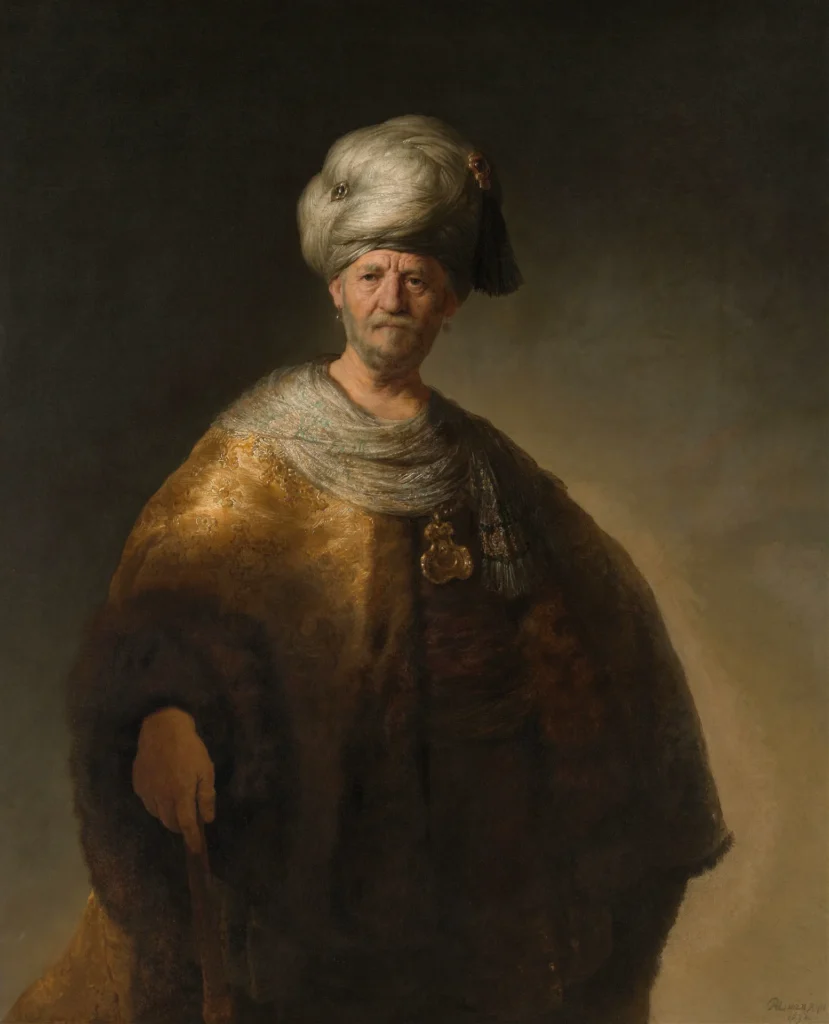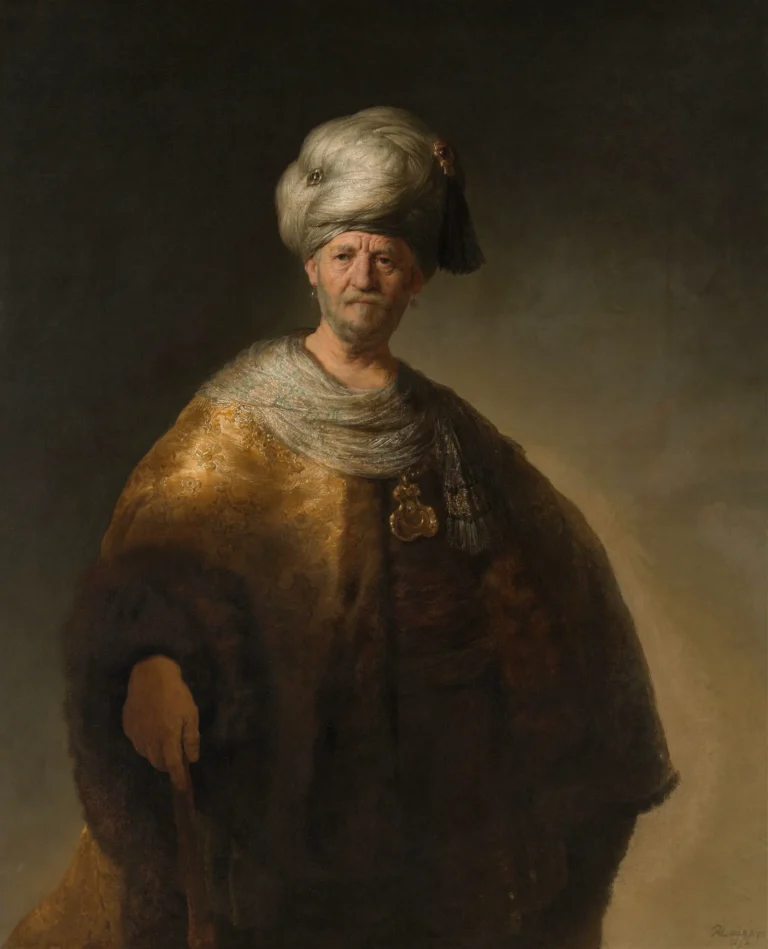Man in Oriental Dress
'Man in Oriental Dress' is a striking example of Rembrandt's early work and a classic 'tronie' painting. Created in 1635, this oil on panel piece features a figure in an Oriental costume with a masterful play of light and shadow, highlighting Rembrandt's technical skill. The painting allows the viewer to appreciate the nuanced facial expression and the intricate textures of the garment. Part of the Rijksmuseum's collection, this work represents the artistic exploration of exoticism during the 17th century, a period marked by a fascination with diverse cultures and styles.
Year 1635
About the Artwork
The artwork 'Man in Oriental Dress' captures the essence of Rembrandt's artistic inquiry during the 1630s, a time when he was experimenting with themes of character studies. Rather than traditional portraiture, this work showcases a 'tronie,' a specific genre that focuses on expressions and attire to convey emotion and narrative. In this piece, the figure's bright turban juxtaposed with the shadowed side of his face exemplifies Rembrandt's innovative chiaroscuro technique, which contributed to the emotional depth of his subjects. The decision to dress the man in Oriental garb points to the larger cultural fascination in Europe with the exotic, influenced by trade and exploration, allowing Rembrandt to explore both texture and lighting. The painting is part of a broader dialogue in his body of work that reflects the society's growing curiosity about different cultures through art.
Did You Know
Liked what you see? Add it to your collection.
Enjoyed reading? Share it.
... continued
Date and Medium
The painting is dated to 1635 and is executed in oil on panel.
Dimensions
The dimensions of the painting are approximately 72 cm in height and 54.5 cm in width.
Genre and Type
This work is classified as a "tronie," which is a character study or head study, rather than a portrait. Tronies were highly popular in the 17th century and allowed artists to explore different facial expressions, lighting effects, and exotic costumes. In this case, the subject is depicted in Orientalizing costume, which was a common theme in Rembrandt's works during the 1630s and early 1640s.
Lighting and Technique
Rembrandt is renowned for his mastery of light, and this painting is no exception. The man's turban and the right side of his face are brightly illuminated, while the left side is in shadow, showcasing Rembrandt's personal and innovative use of light and shadow.
Provenance and Variants
The original painting is part of the Rijksmuseum collection in Amsterdam, with the object number SK-A-3340. There are several copies and variants of this work, some of which were made by Rembrandt's workshop or other artists. For example, a copy in the Leiden Collection is nearly identical in size and handling to the original and is believed to have been executed almost contemporaneously with the original.
Historical Context
Rembrandt's use of Orientalizing costumes was part of a broader trend in Dutch art that reflected a fascination with the exotic and the biblical. These costumes often lent an air of authenticity to historical and biblical scenes, and they also allowed Rembrandt to explore various textures and lighting effects.










